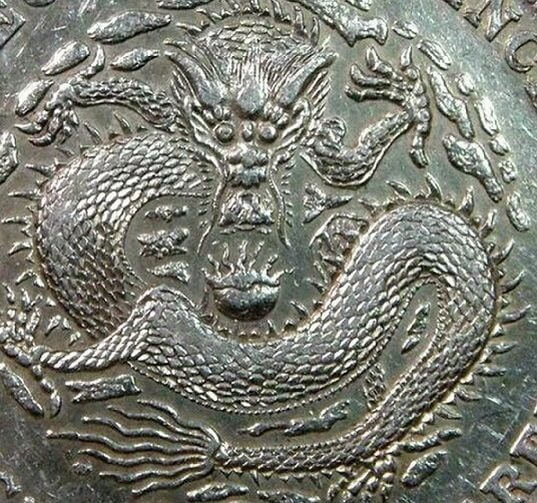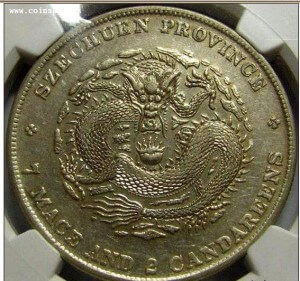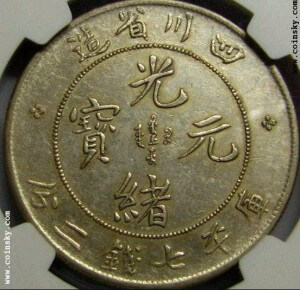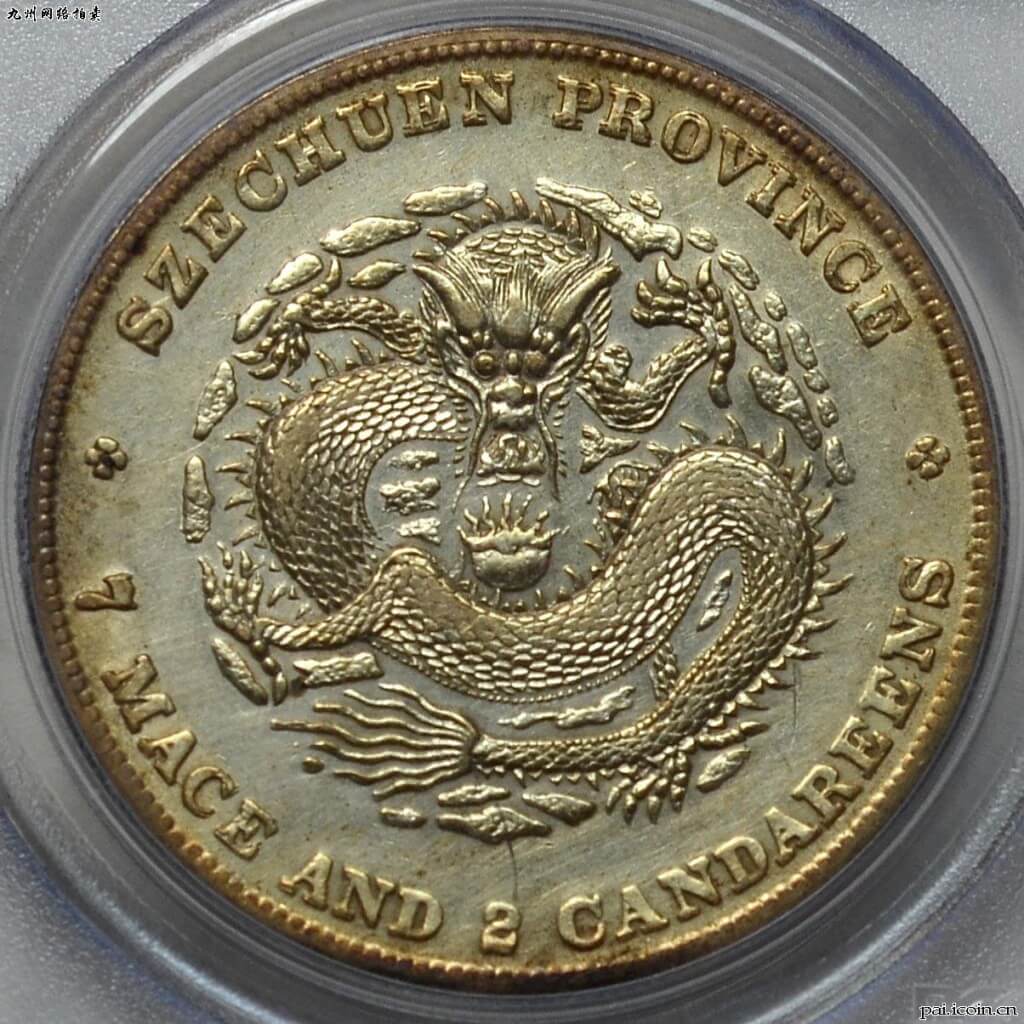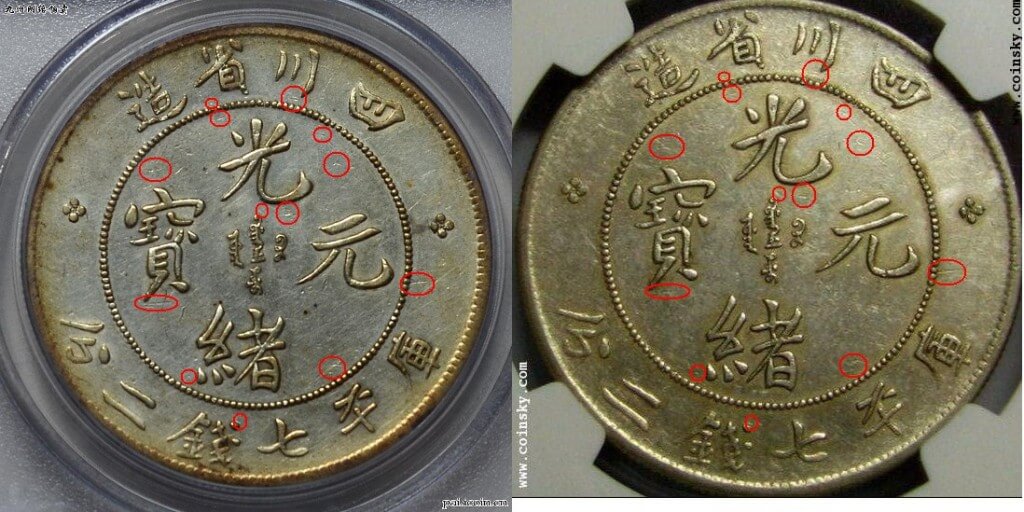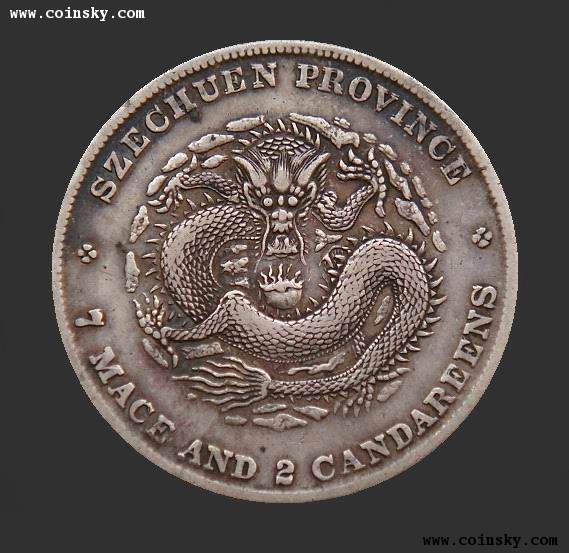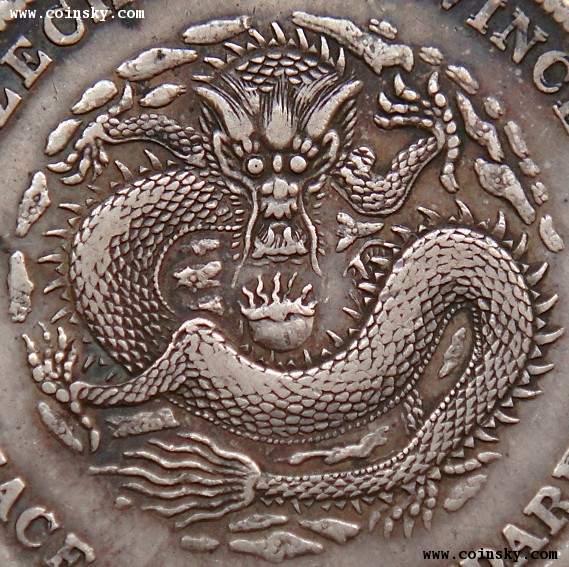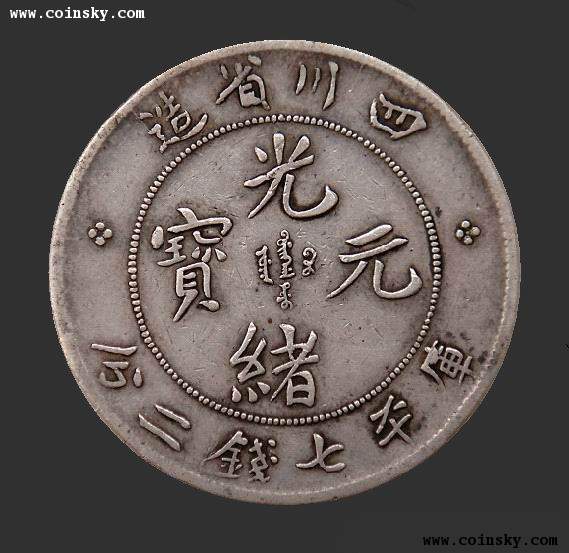A good friend from Hangzhou recently contacted me regarding a Chinese coin he was interested in purchasing. It was a beautiful but rather expensive Szechuan coin (¥100,000 RMB or about $16,400 USD at the time of writing), and he was unsure about the deal.
The Szechuan dollar my friend was considering to buy was a high grade sample of the rare “库 not connected” variety (四川光绪剑毛龙无头车). It had sharp details and was graded AU50 by NGC, however the coin had clearly been cleaned and my friend hoped for a discount.
I browsed past sales results when I was struck by the similitude between the coin my friend coveted and a Szechuen dollar sold at the Jiuzhou 2012 Summer Auction (九州2012夏季机制币、纸币拍卖专场). At first, I thought that the coin graded XF details by PCGS had been re-submitted to NGC in a bid for a more favorable grade, but I quickly verified that the coins’ obverse were distinct.
While carefully examining the reverse, I was troubled to find an identical scratch below the right side rosette. Despite the low resolution of the pictures sent by my friend, it was obvious this ought to be a circulation mark. Two coins of the same type often exhibit wear or weak strike in the same place, but identical circulation marks should never be observed: it would indeed imply both coins were randomly damaged in the exact same fashion while being handled by countless men and women through a century!
The scratches I highlighted on the picture above were damning evidences that both coins were very high level forgeries. The counterfeiters went to the trouble of striking different obverses, but were surprisingly lazy etching the same marks on the reverse. The replica is still stunning, and actually fooled two world-class grading agencies and the highly experienced Chinese coins collectors who bought them. It is especially troubling that without the inexplicable laziness of the counterfeiters, and a stroke of luck comparing pictures on the Internet, both fake coins would have most likely stayed undetected.
Once again, I will urge my dear readers to listen to their instinct when buying: if you are somehow hesitant about a deal, like my friend was, the best decision is often to walk away. It is also best to avoid buying cleaned or polished coins altogether, especially in high grade, as it is too convenient a camouflage for artificial aging.
Navigating the more than 200 known varieties of the Szechuan dollar can be intimidating; the erudition required makes the Szechuen 7 mace and 2 candareens the darling of sophisticated Chinese coins collectors. As the number of advanced collectors increase and knowledge about the rarest varieties becomes more widespread, their value have dramatically increased in the past two years and Szechuan dollars in desirable condition have already all but vanished from the market. The Szechuan Narrow Face Dragon, with a doubled die error on the obverse (see below), is one of the hottest varieties.
I had mentionned in an earlier post that this type had even rarer subvarieties, one of which I recently acquired an interesting specimen graded by PCGS. At first glance, both coins look very similar. The gaunt dragon has the same ragged one-eyed face that makes its charm, the doubling on the English legend characteristic of this type is still there as well.
The difference is indeed on the reverse side of the coin (see below). The attentive reader will notice that the top the “庫” character on the reverse is very different, as if the brush of the calligrapher let out an ink blot drawing it. The bottom “省” character is also maculated with a similar silver ink blotch. The full name of this very rare variety is 剑毛龙无头车花心点粘笔庫, or literally “Sharp spines dragon with decapitated Chē, rosette with dot, and smudged Kù” in English; what a nice demonstration of the compactness and expressivity of the Chinese language!
The image of a gauche scribe making ink blots is more romantic than the hard, mechanical reality: this kind of filling is called a “die chip” error. Damage to a small portion of the die or weakness in its design can lead to raised, unstruck surfaces, which often manifest as plugged letters or dates. A more concise English name for this variety could therefore be “Narrow face dragon with doubled die on the obverse and die chip on the reverse”.
The die crack on the left of the 造 character on the reverse, present on both varieties, implies both types were struck from the same die. This means that the die chip error coins were minted last and their number is only a fraction of the total population for this variety. It is very likely indeed that this die was scrapped as soon as the mint found out that the coins were “stained” by the very silver ink blots that now make them unique and valuable…
